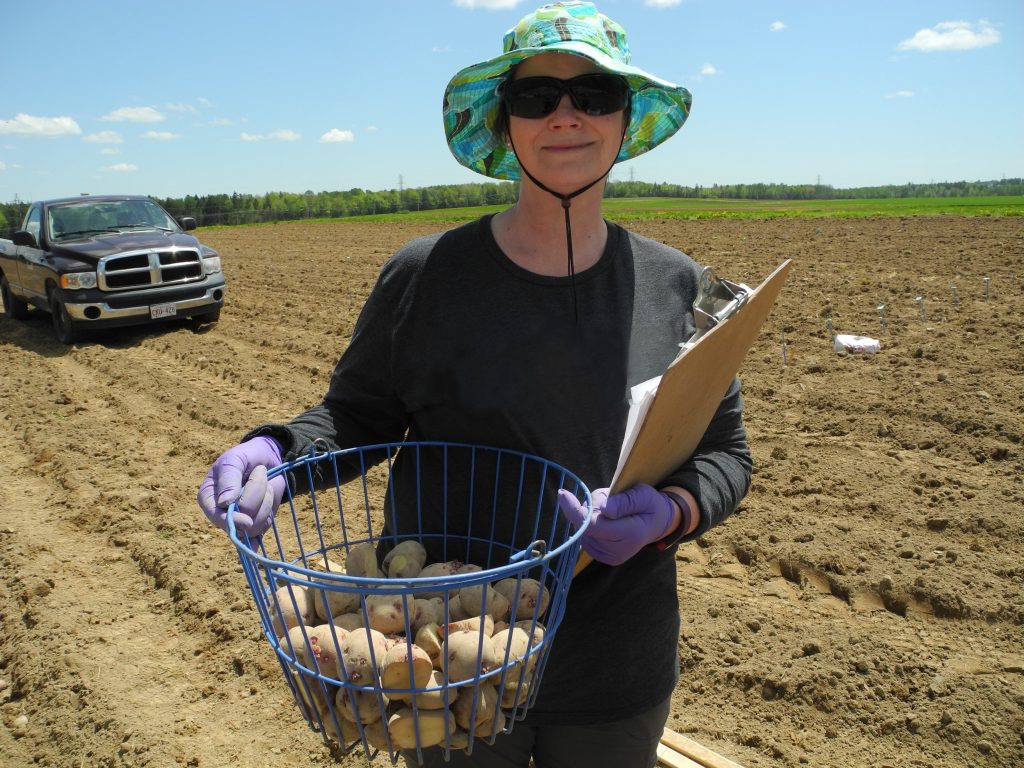
Features
Agronomy
Traits and Genetics
Bringing wild relatives into potato breeding
Whether its disease resistance, tolerance to stress in the environment or better cold-storage capabilities, research scientists have been incorporating wild potato genetic resources into breeding lines for years to develop more resilient potato varieties. At Agriculture and Agri-Food Canada's (AAFC) Fredericton Research and Development Centre, this practice is being increasingly refined in order to meet the needs of the industry which range from higher yields to disease and drought resistance.
June 12, 2017 By Potatoes in Canada
 A member of potato breeding team holding a basket of seed potatoes to be planted this season
A member of potato breeding team holding a basket of seed potatoes to be planted this season In fact, AAFC head potato breeder, Dr. Benoit Bizimungu, says virtually all of the 80,000 potential new potato varieties being planted in various plots at Benton Ridge Potato Breeding Substation this season have been bred with genes from wild potato species.
These wild relatives originated in the region stretching from the southwestern U.S. to South America where they have adapted to a wide range of harsh conditions. Dr. Bizimungu says, these species have developed a reservoir of traits that are increasingly important to researchers working to develop a better potatoes.
Each year, AAFC’s potato breeding team goes from the lab to the farm to plant potential new varieties at Benton Ridge in order to identify superior selections for various markets. Scientists are looking at lines combining multiple resistances and suitable end-use quality traits. Once they’ve narrowed down the most promising candidates, they will continue to evaluate them against a long list of criteria in the hopes of identifying a superior combination of traits. The latter will be released to industry to allow growers to evaluate them in real production conditions.
Print this page